Chapter 41 Animal Nutrition. Overview: The Need to















































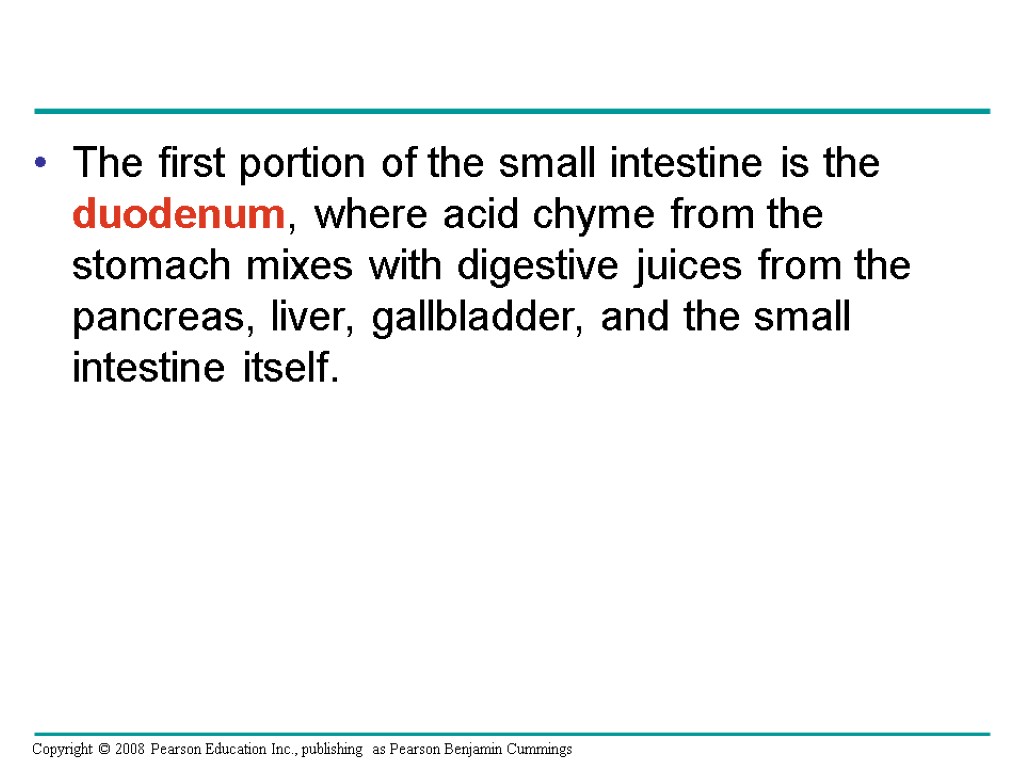

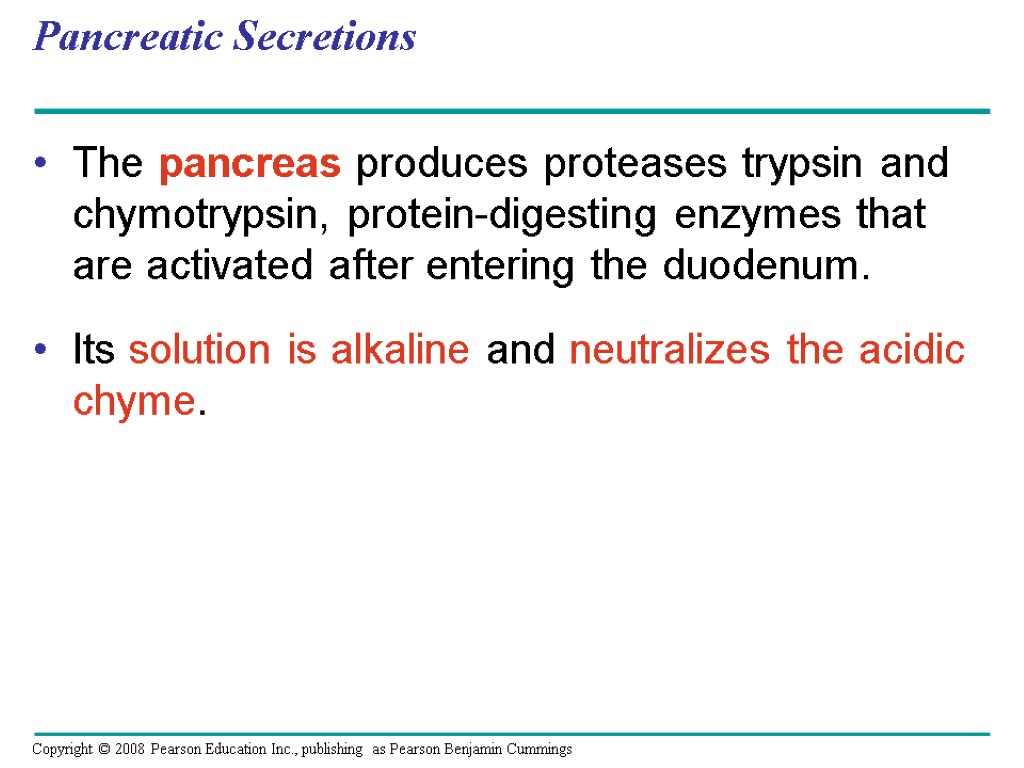
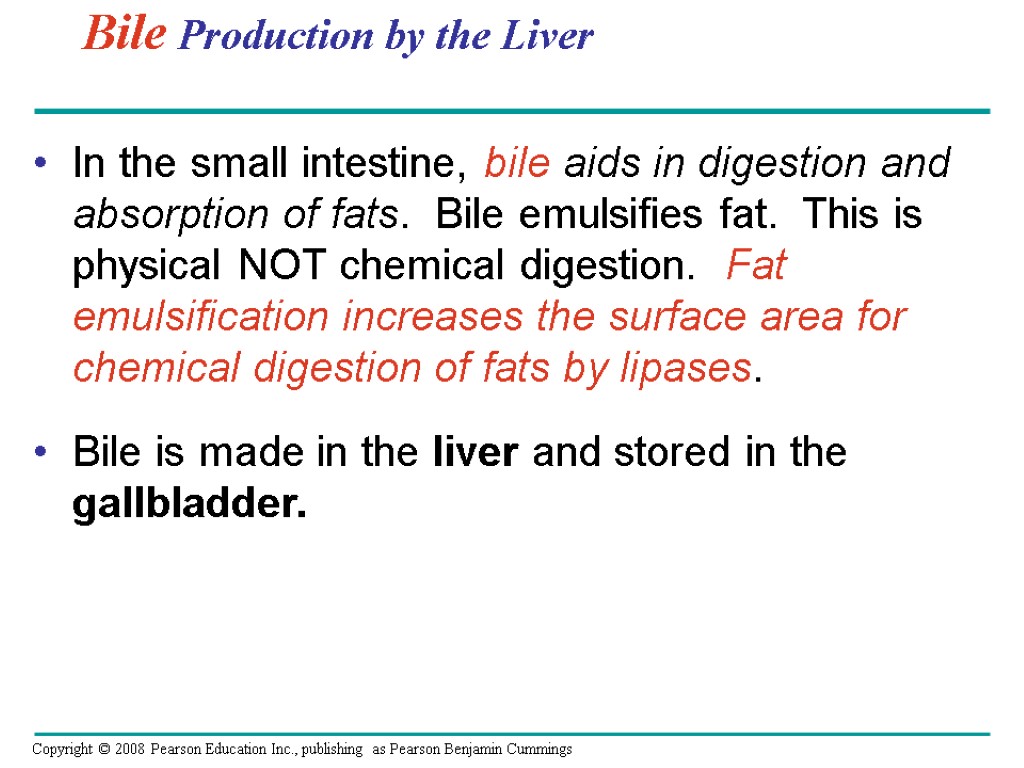

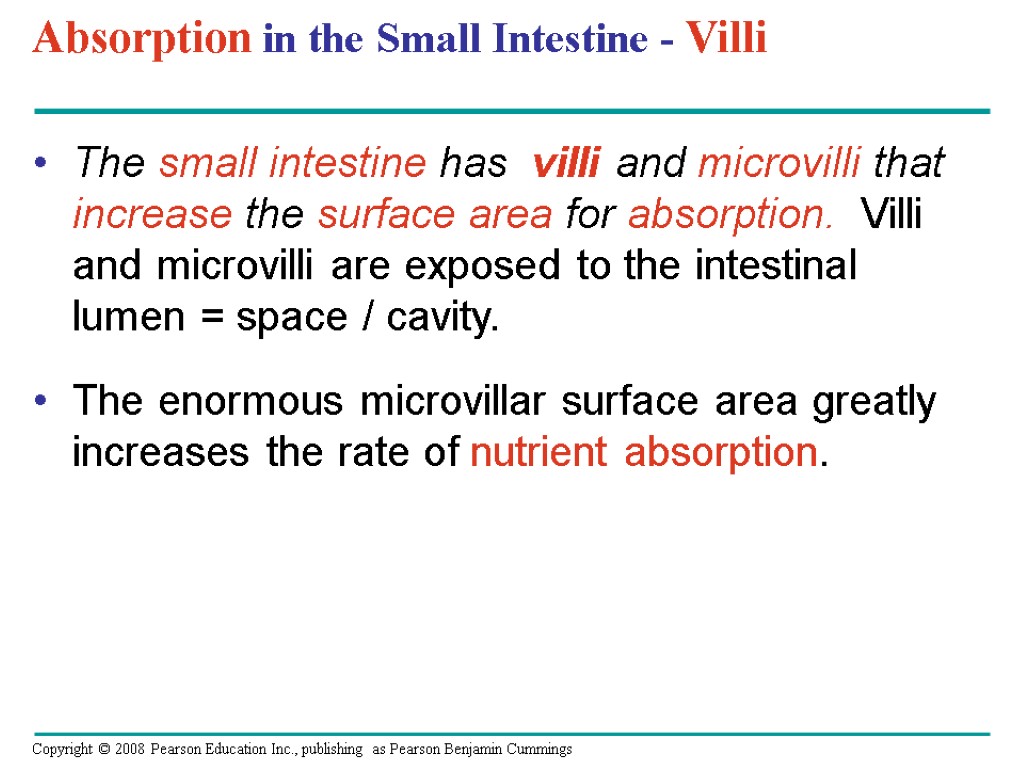
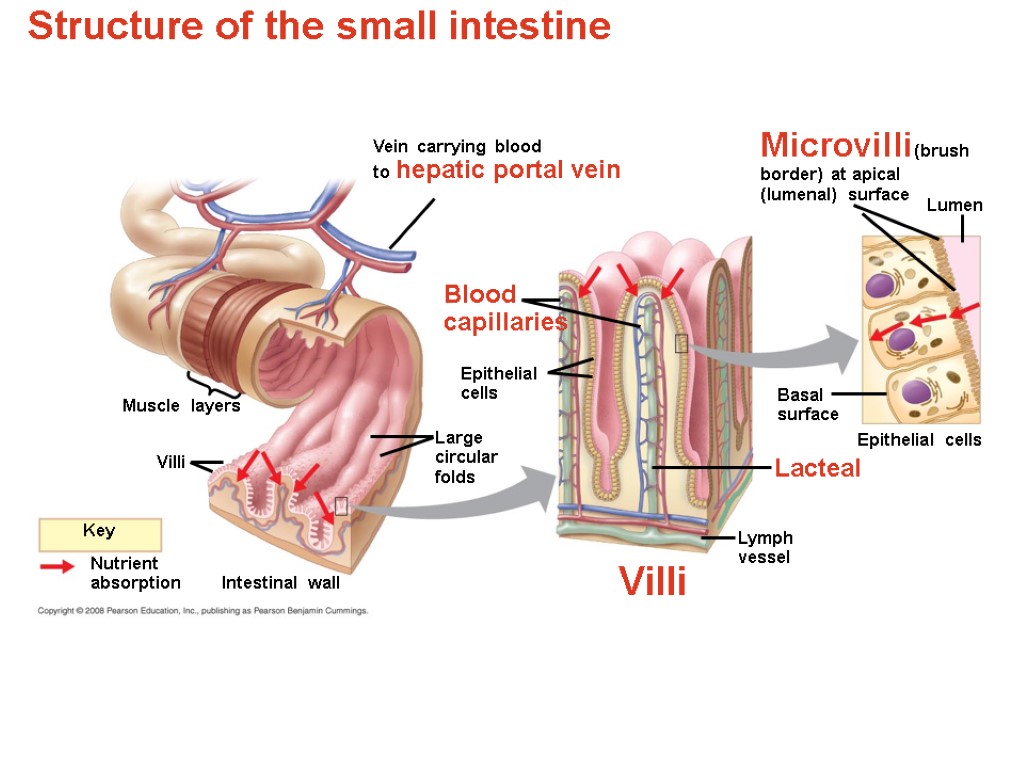
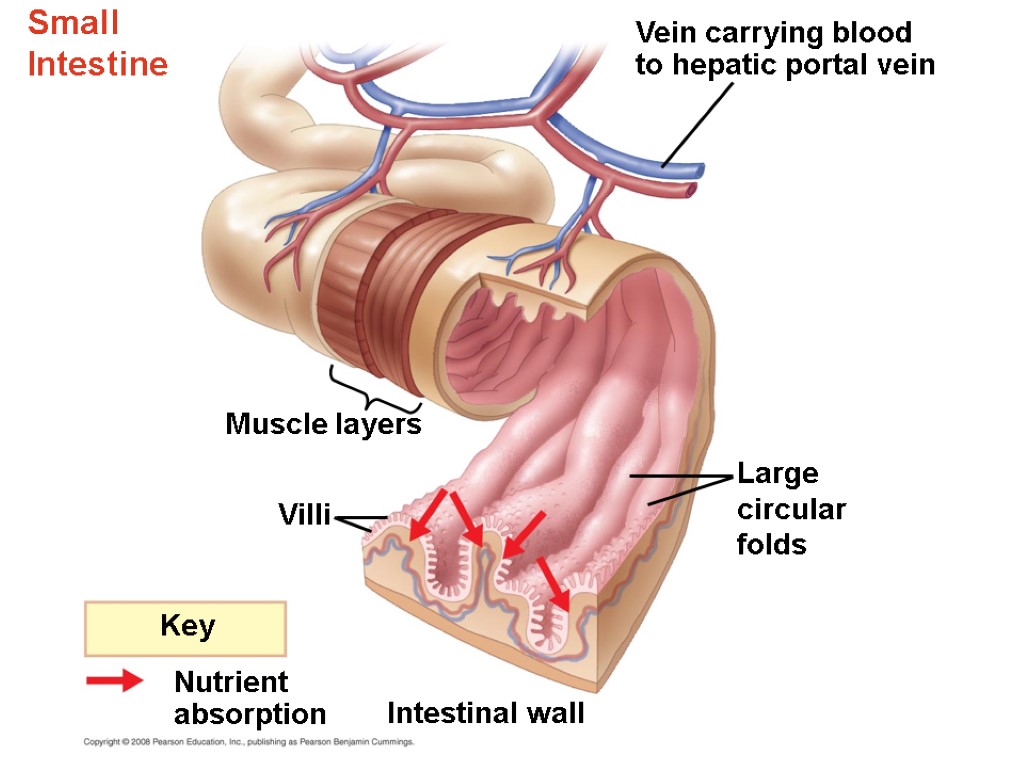

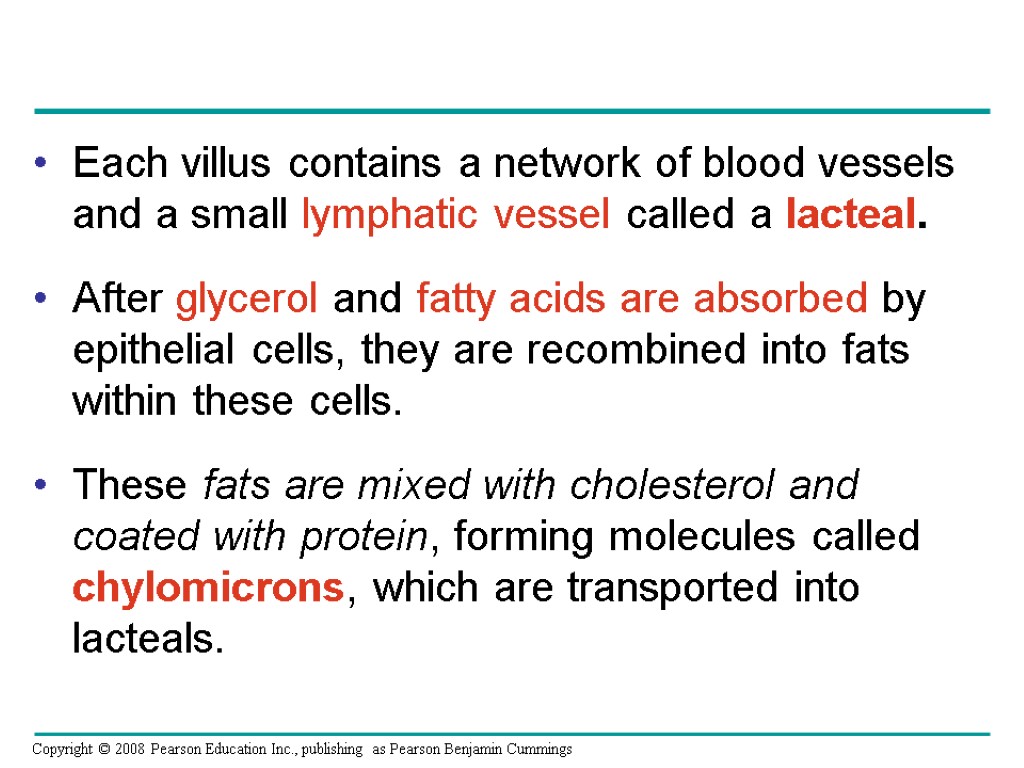
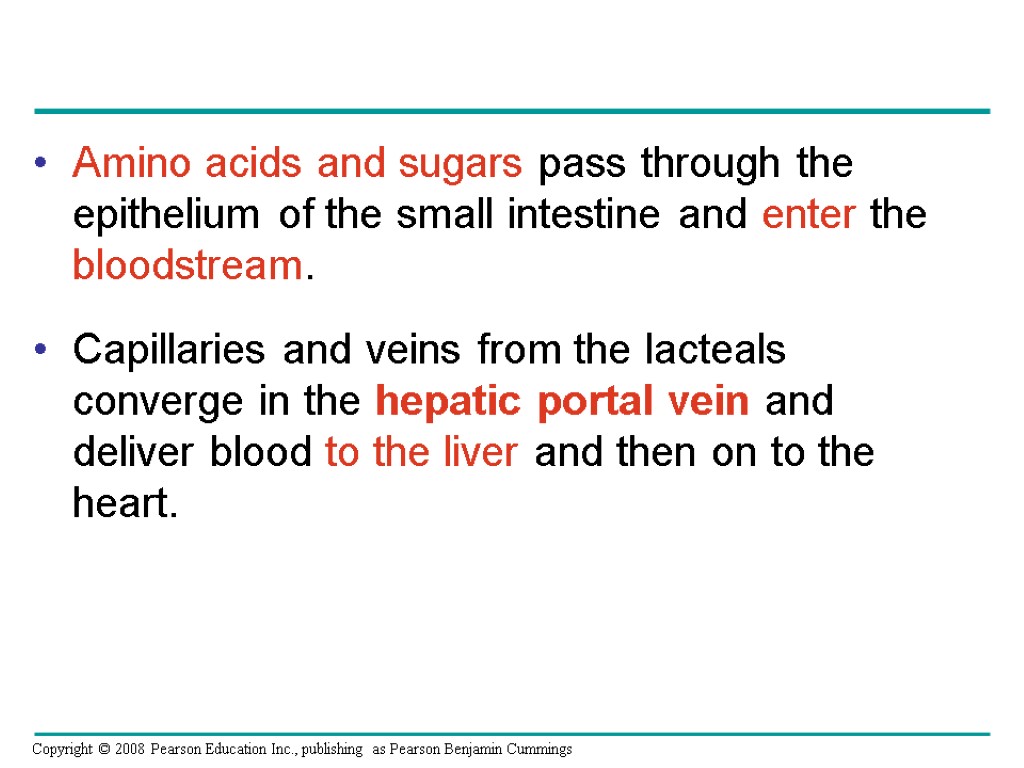
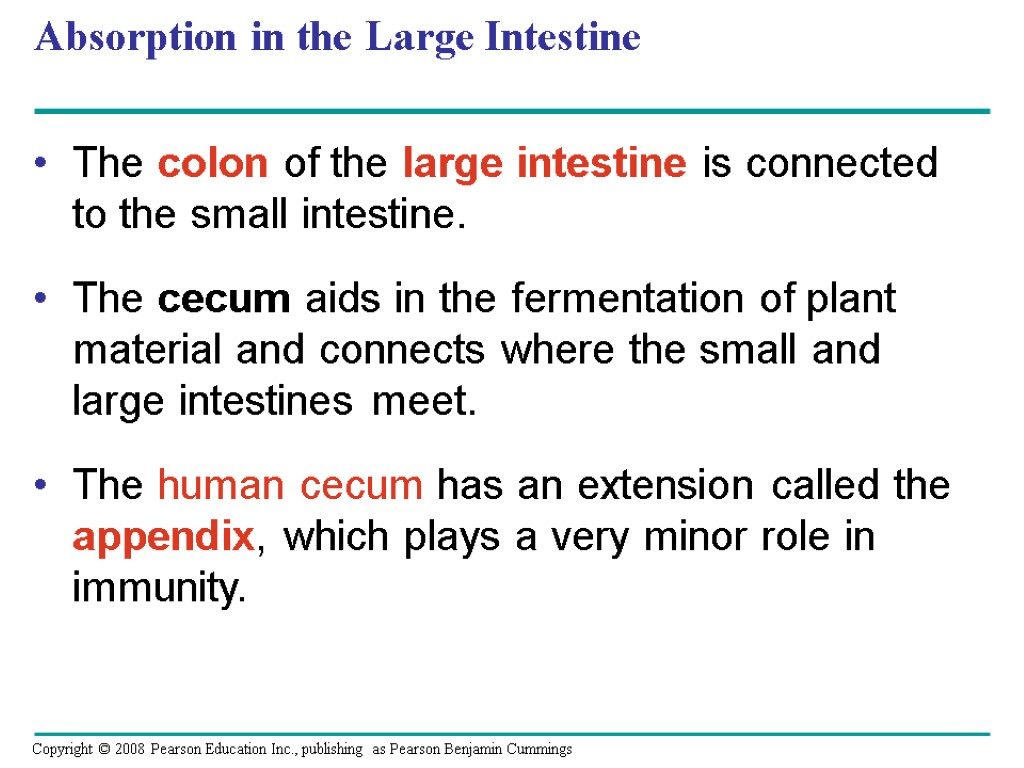
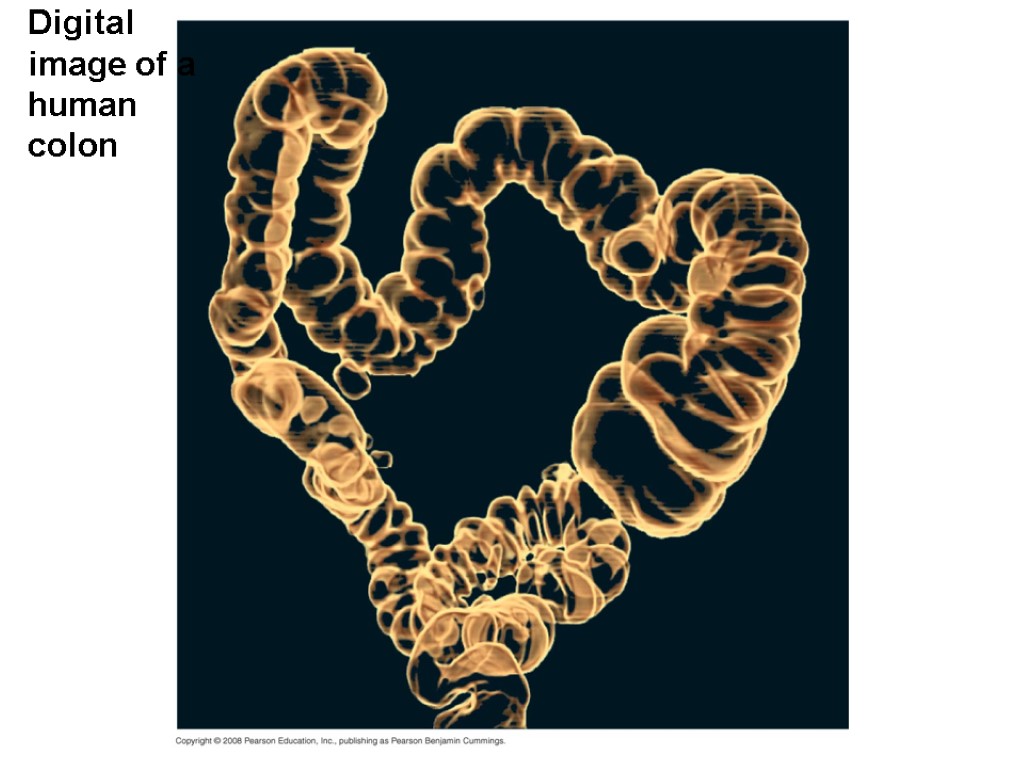
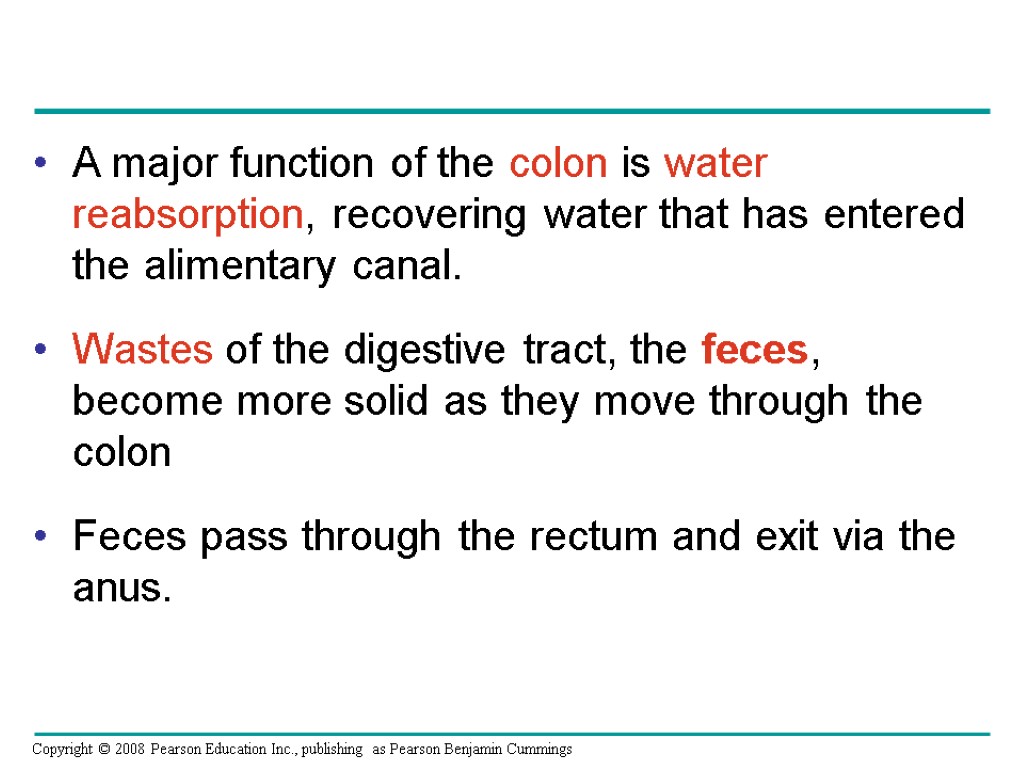
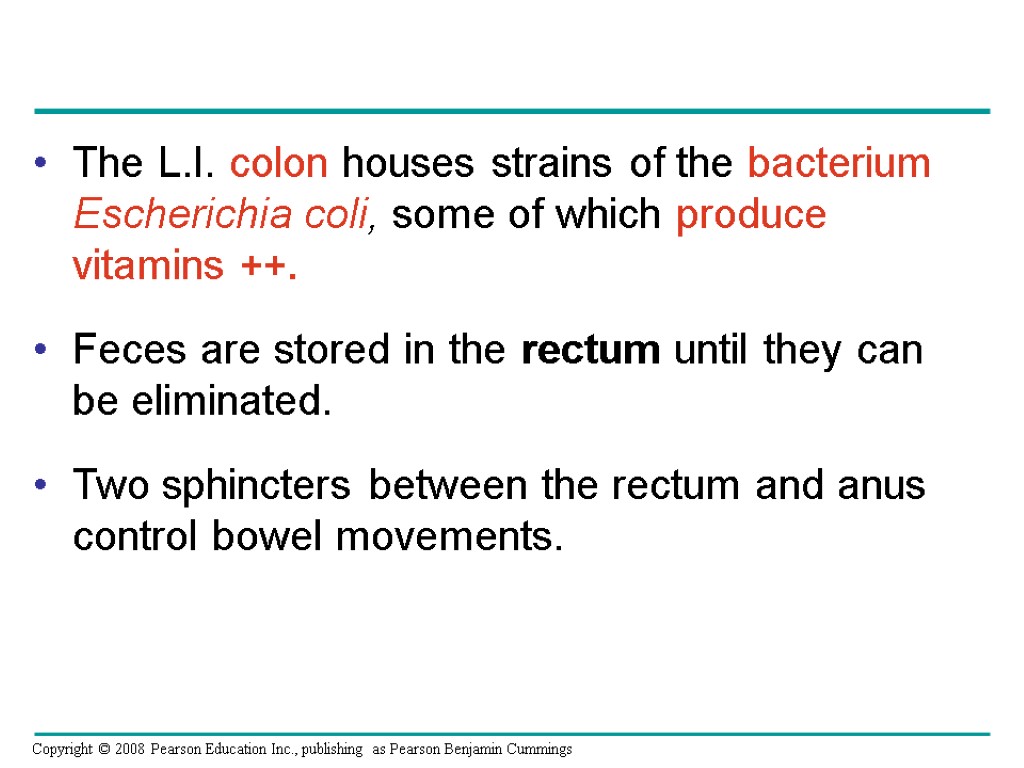
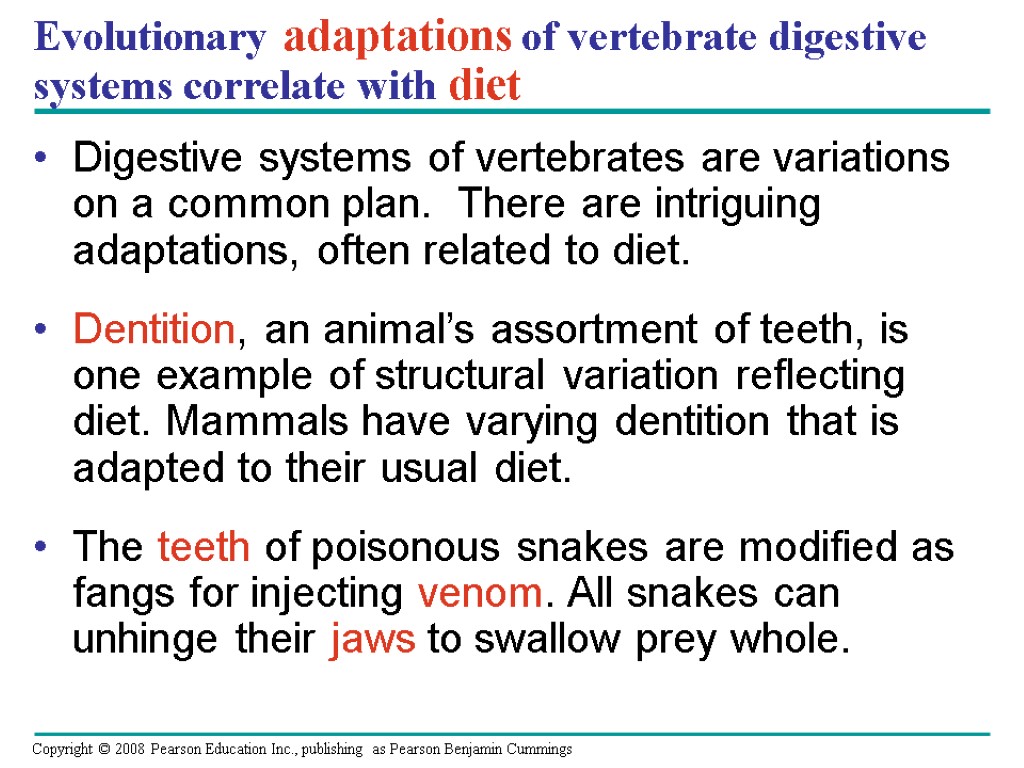
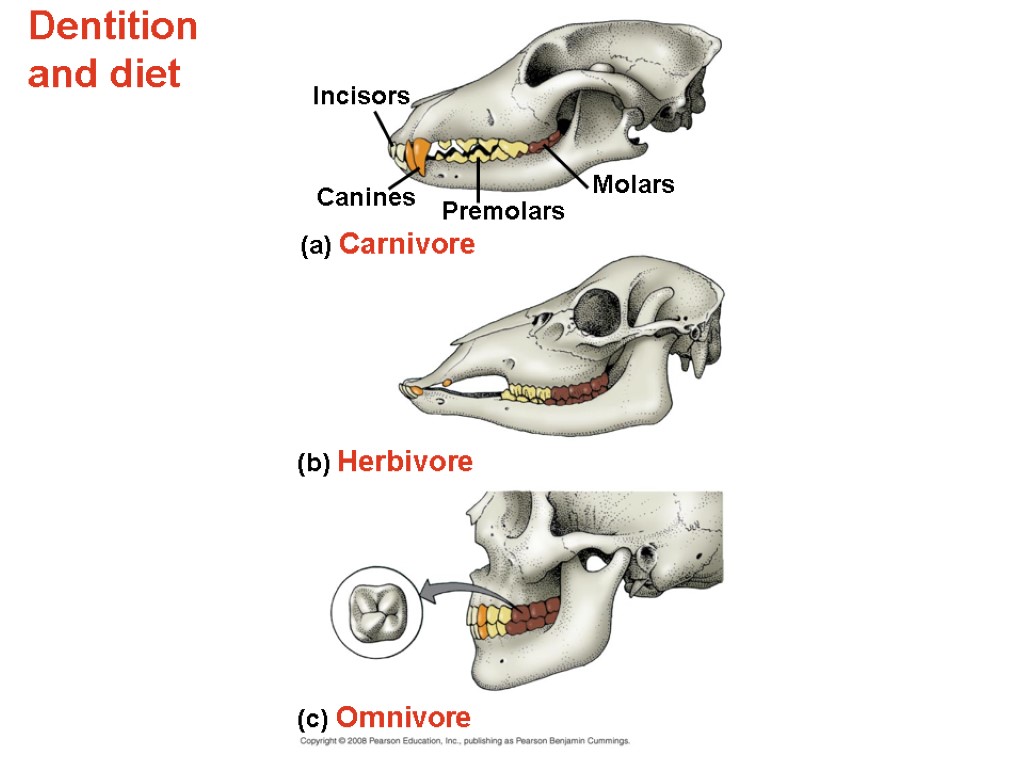
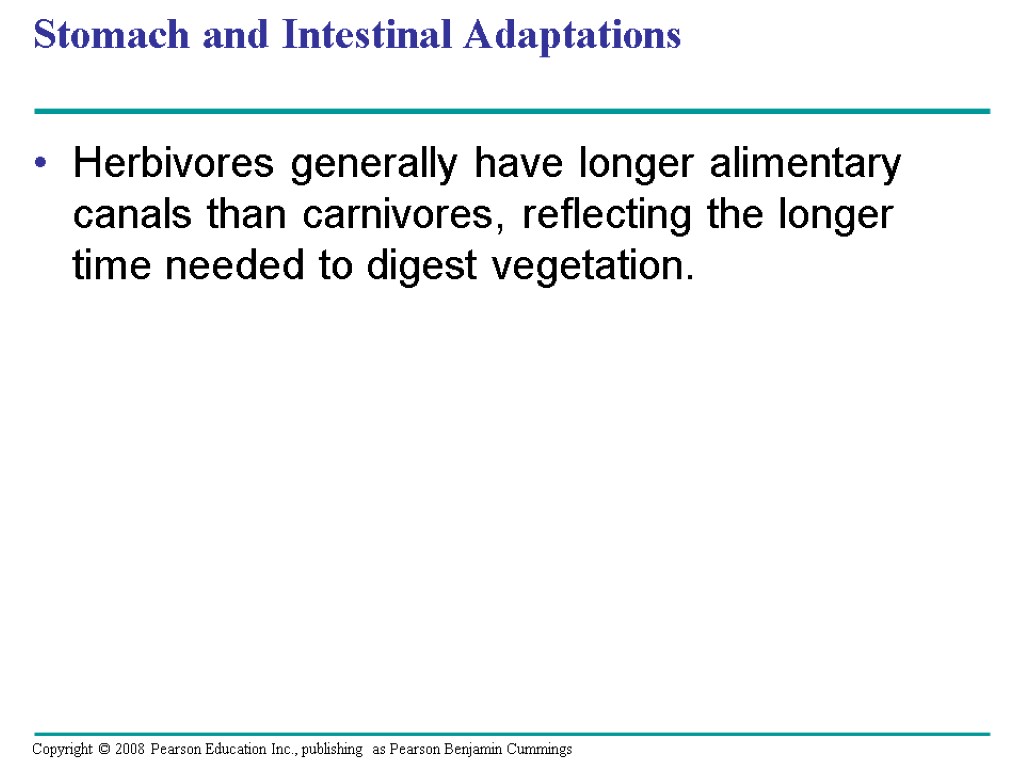
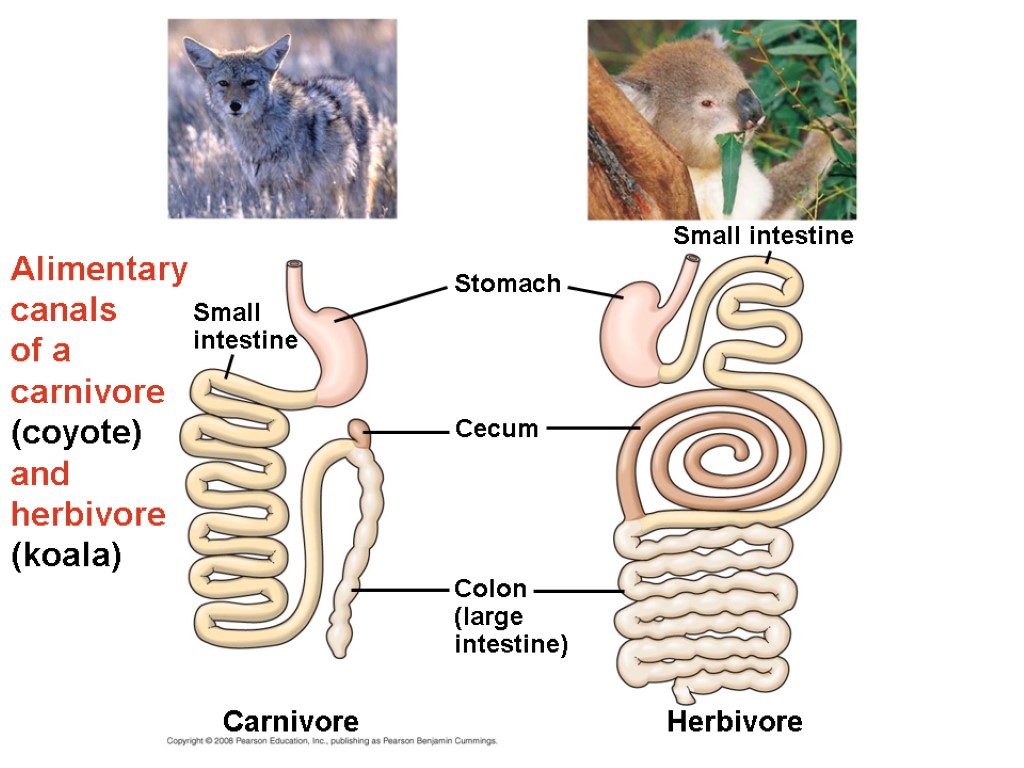
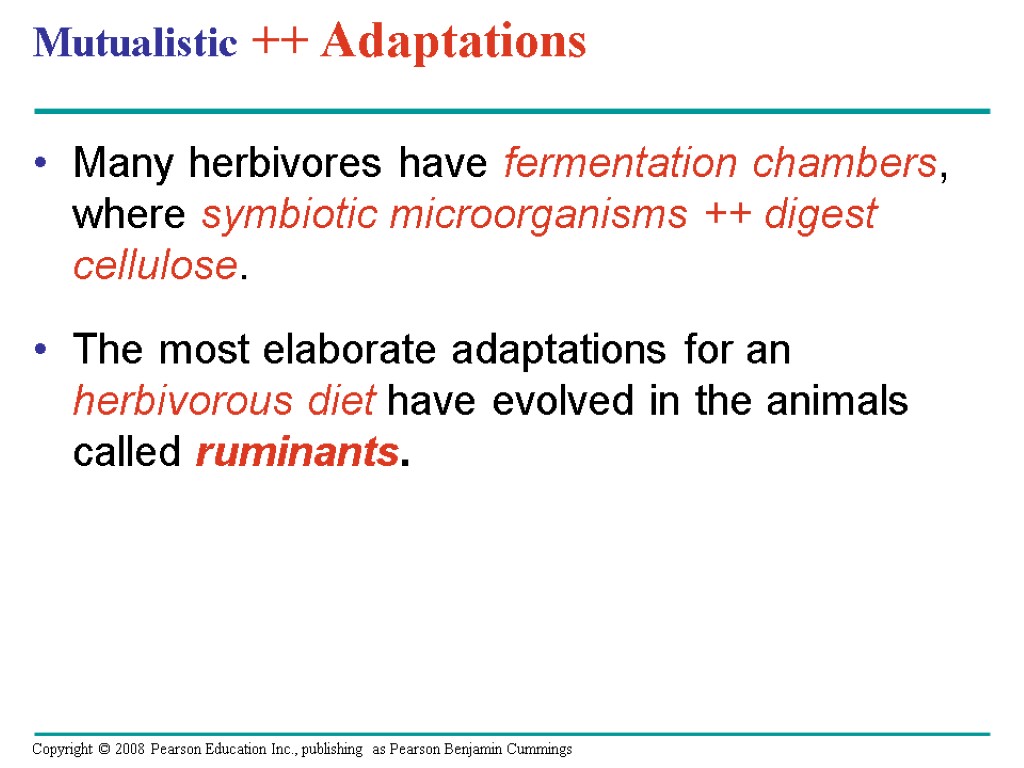
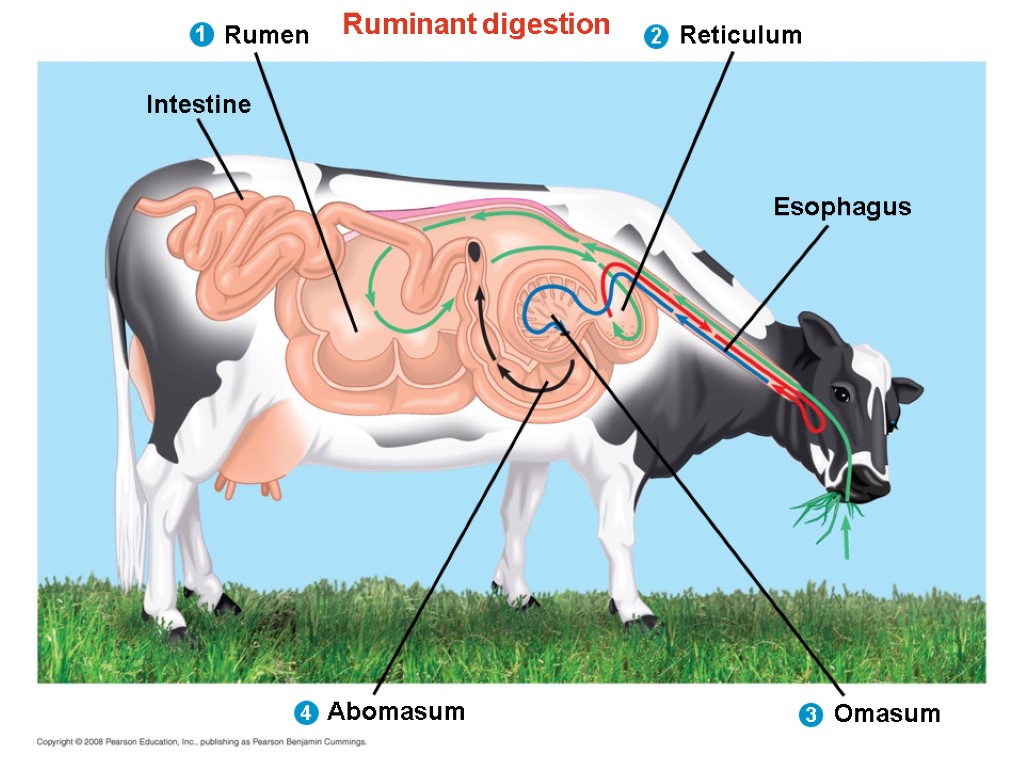
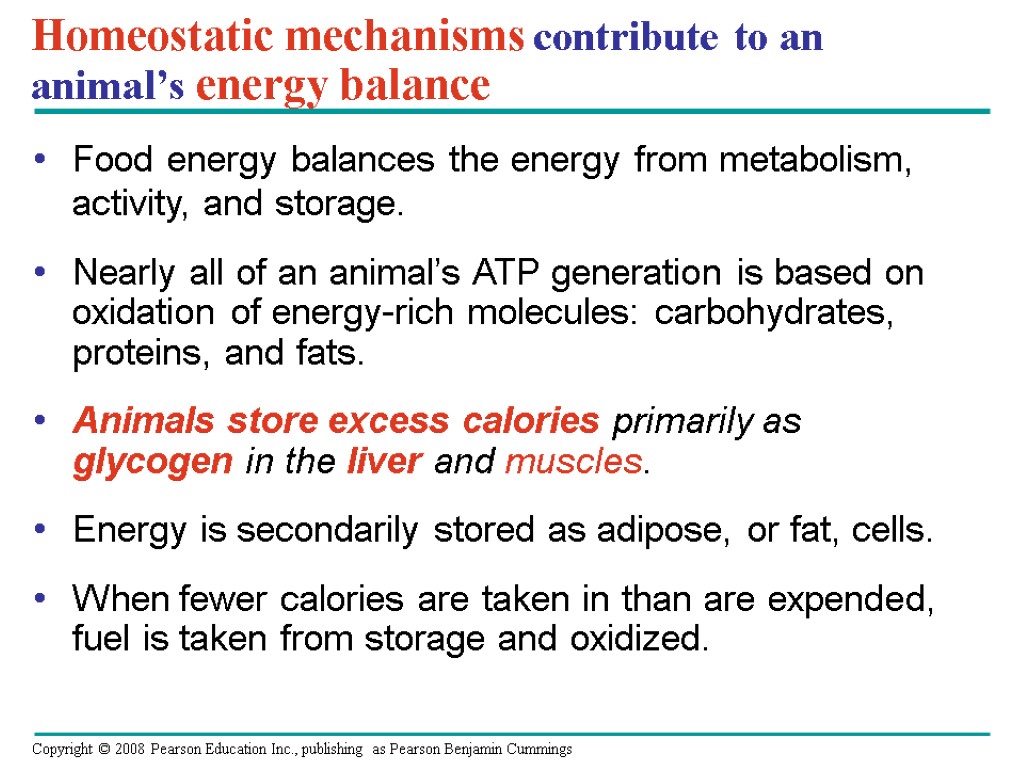
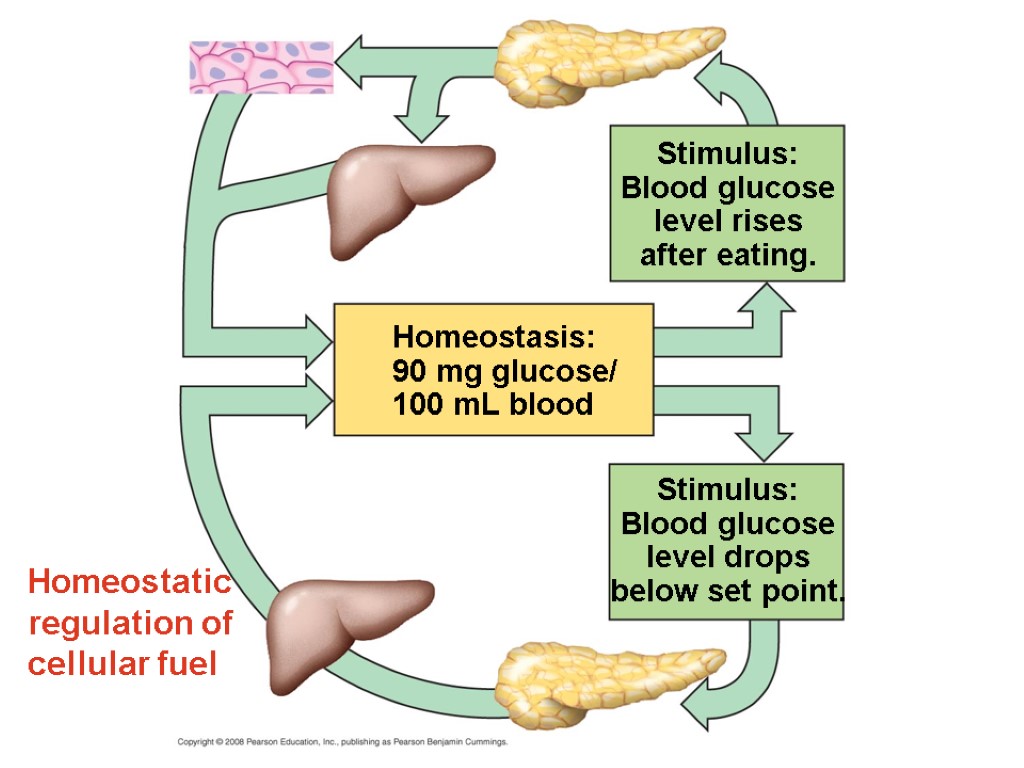
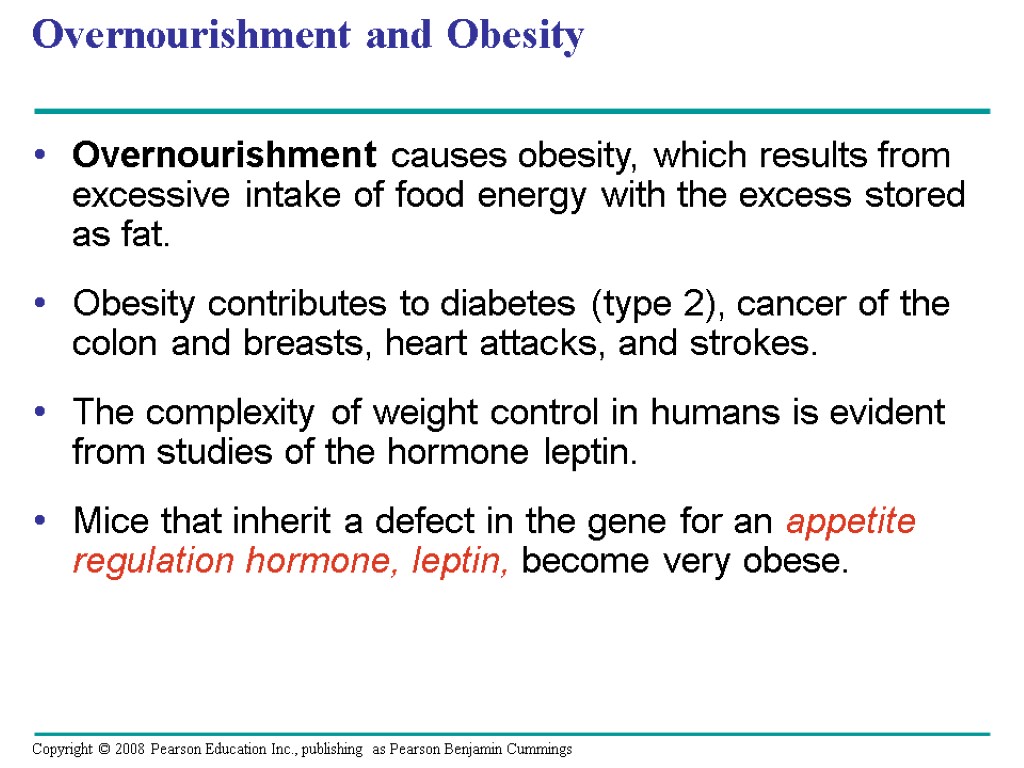
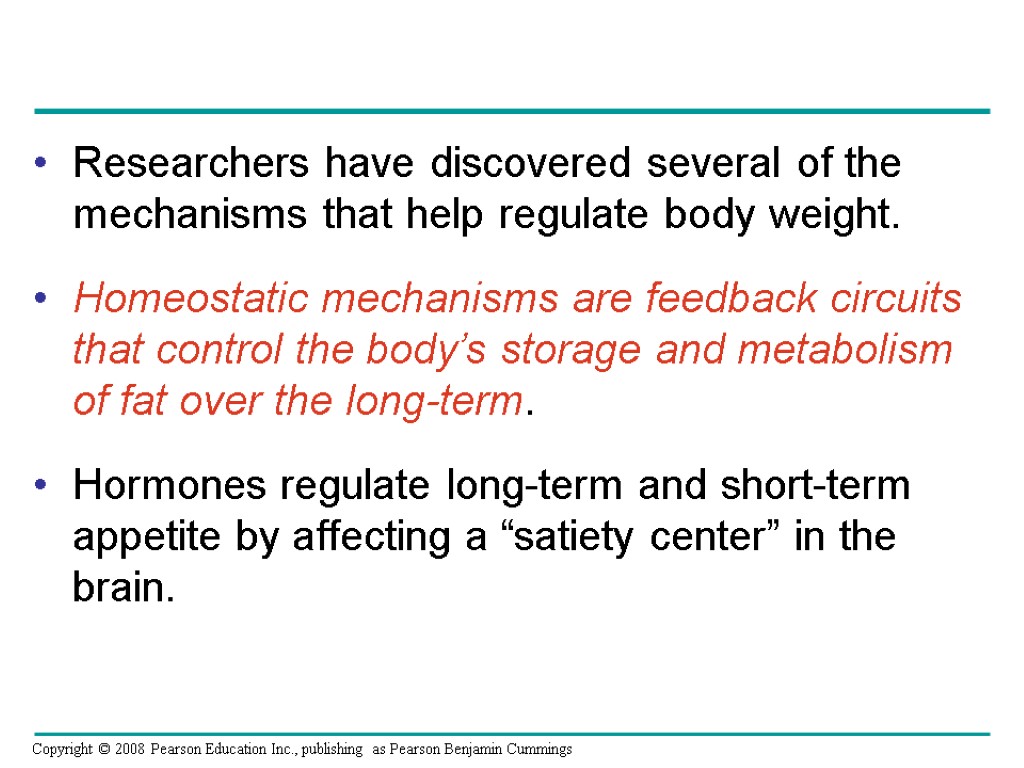
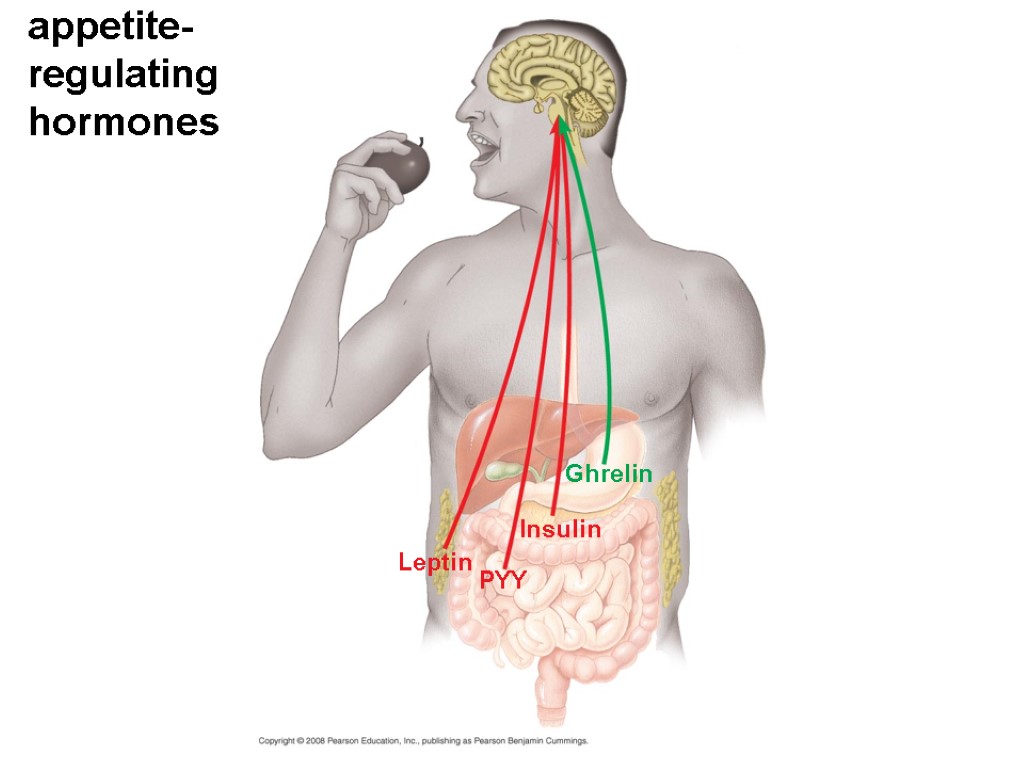
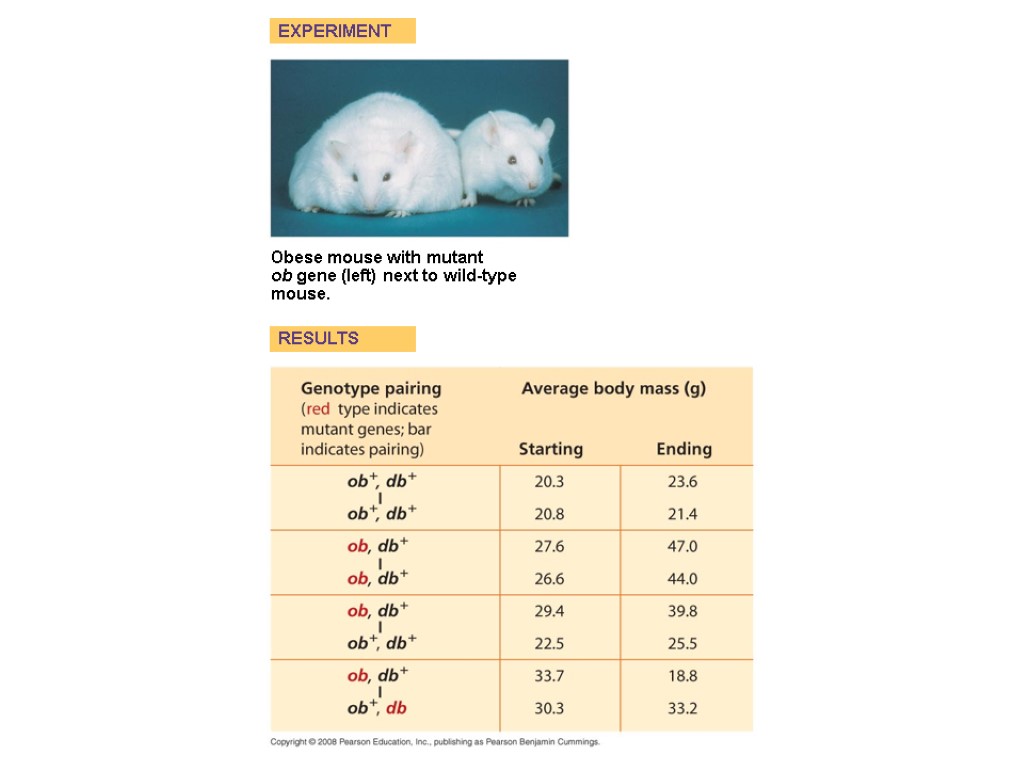
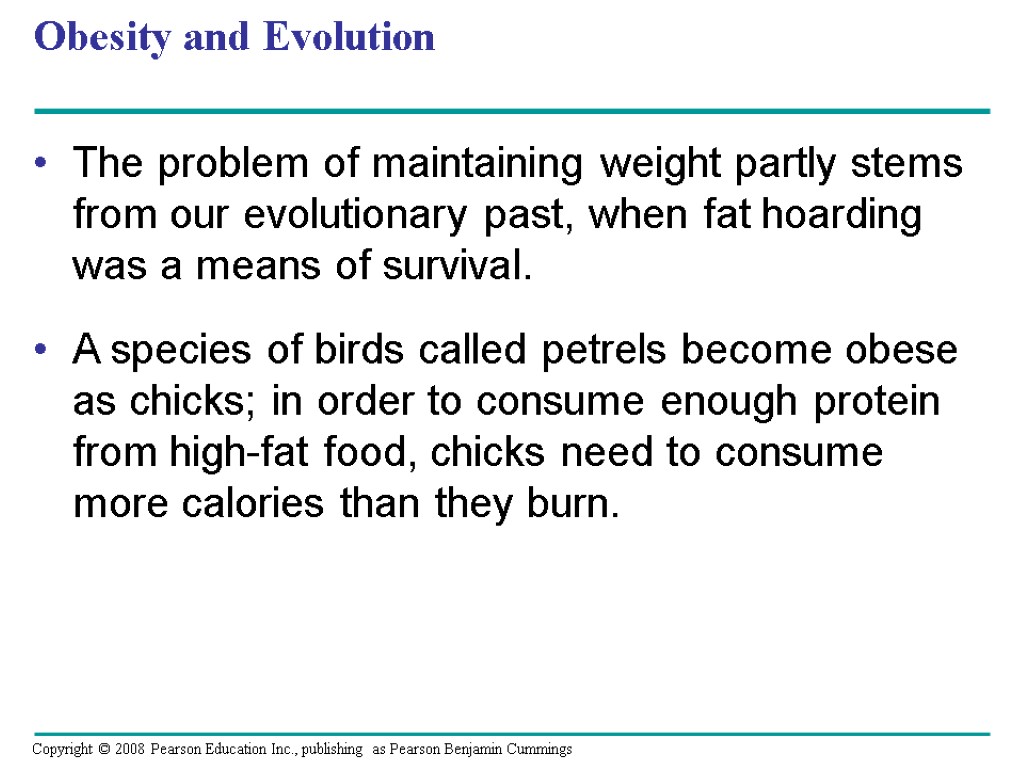
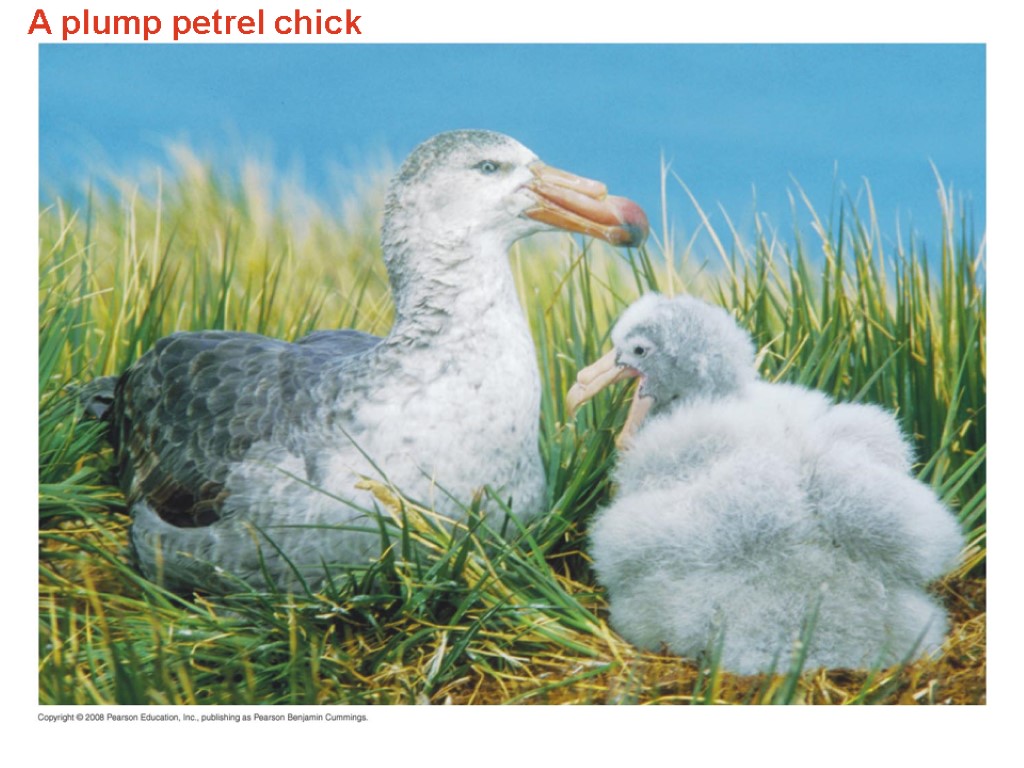
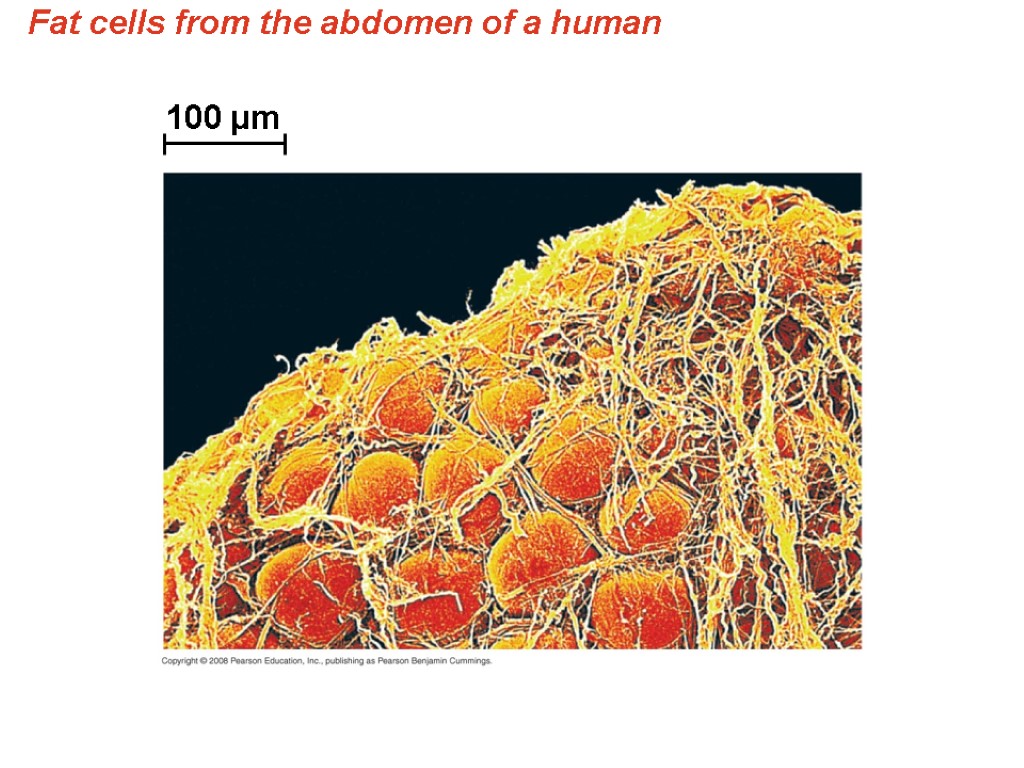

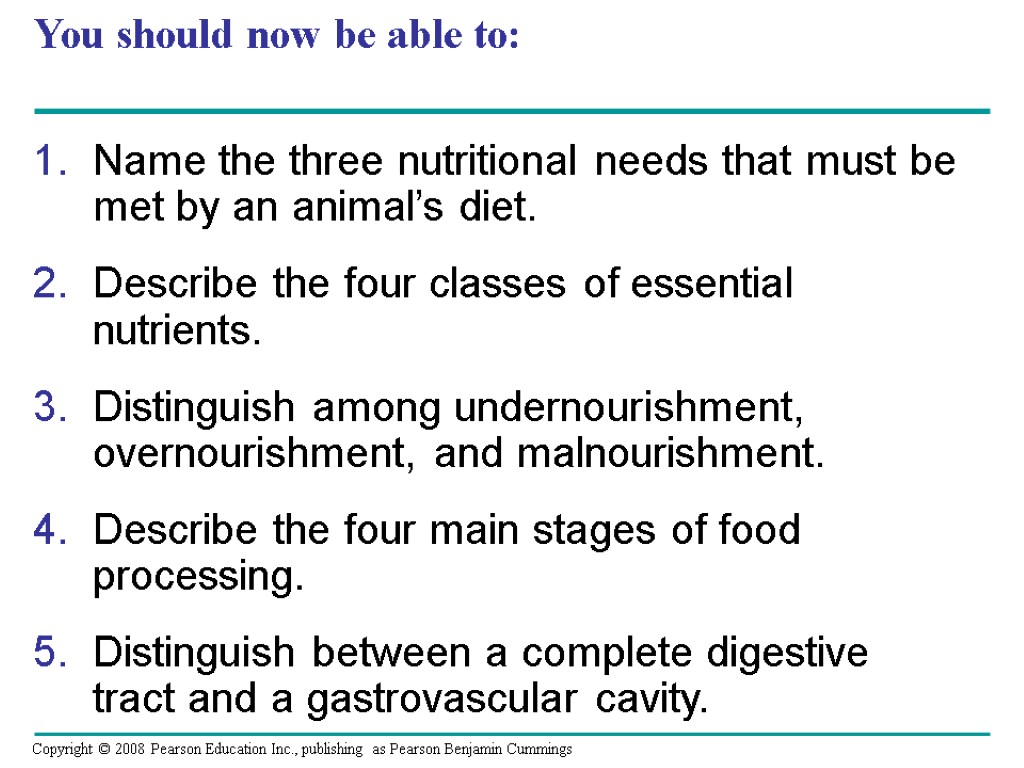
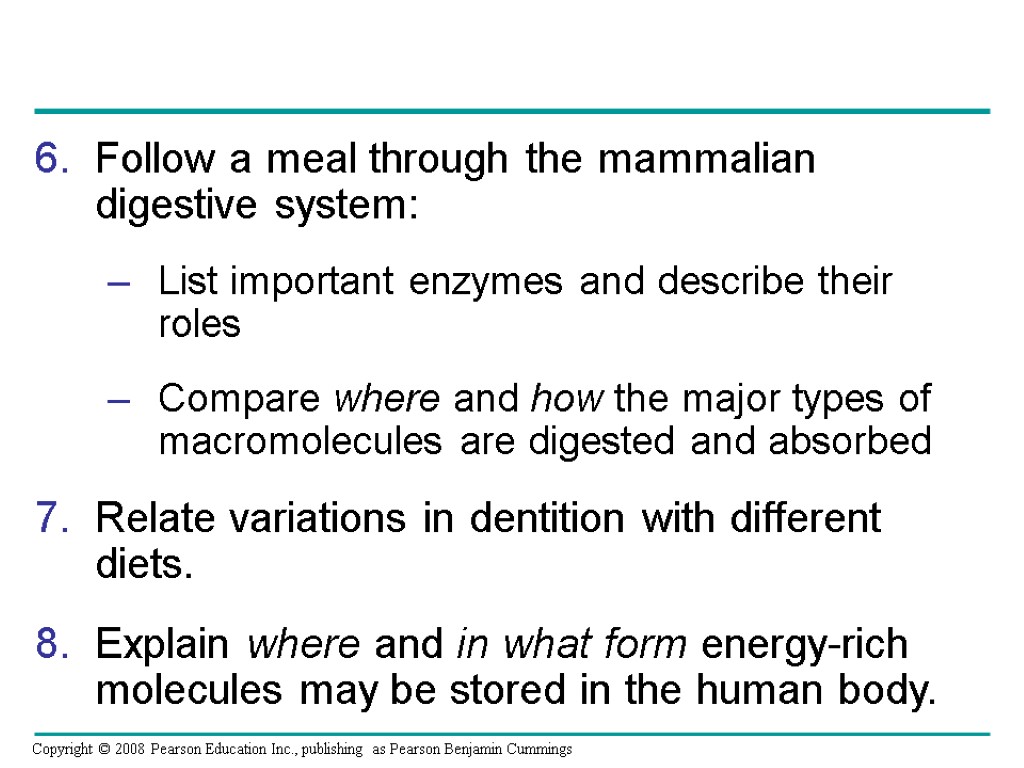
41_lecture_presentation_0.ppt
- Количество слайдов: 80
 Chapter 41 Animal Nutrition
Chapter 41 Animal Nutrition
 Overview: The Need to Feed Food is taken in, taken apart, and taken up in the process of animal nutrition. In general, animals fall into three categories: Herbivores eat mainly autotrophs (plants and algae). Carnivores eat other animals. Omnivores regularly consume animals as well as plants or algal matter.
Overview: The Need to Feed Food is taken in, taken apart, and taken up in the process of animal nutrition. In general, animals fall into three categories: Herbivores eat mainly autotrophs (plants and algae). Carnivores eat other animals. Omnivores regularly consume animals as well as plants or algal matter.
 An animal’s diet must supply chemical energy, organic molecules, and essential nutrients An animal’s diet provides chemical energy, which is converted into ATP and powers processes in the body. Animals need a source of organic carbon and organic nitrogen in order to construct organic molecules. Essential nutrients are required by cells and must be obtained from dietary sources.
An animal’s diet must supply chemical energy, organic molecules, and essential nutrients An animal’s diet provides chemical energy, which is converted into ATP and powers processes in the body. Animals need a source of organic carbon and organic nitrogen in order to construct organic molecules. Essential nutrients are required by cells and must be obtained from dietary sources.
 Essential Nutrients There are four classes of essential nutrients: Essential amino acids Essential fatty acids Vitamins Minerals
Essential Nutrients There are four classes of essential nutrients: Essential amino acids Essential fatty acids Vitamins Minerals
 Essential Amino Acids Animals require 20 amino acids and can synthesize about half from molecules in their diet. The remaining amino acids, the essential amino acids must be obtained from food in preassembled form. A diet that provides insufficient essential amino acids causes malnutrition called protein deficiency.
Essential Amino Acids Animals require 20 amino acids and can synthesize about half from molecules in their diet. The remaining amino acids, the essential amino acids must be obtained from food in preassembled form. A diet that provides insufficient essential amino acids causes malnutrition called protein deficiency.
 Meat, eggs, and cheese provide all the essential amino acids and are thus “complete” proteins. Most plant proteins are incomplete in amino acid makeup. Individuals who eat only plant proteins need to eat specific plant combinations to get all essential amino acids. Some animals have adaptations that help them through periods when their bodies demand extraordinary amounts of protein.
Meat, eggs, and cheese provide all the essential amino acids and are thus “complete” proteins. Most plant proteins are incomplete in amino acid makeup. Individuals who eat only plant proteins need to eat specific plant combinations to get all essential amino acids. Some animals have adaptations that help them through periods when their bodies demand extraordinary amounts of protein.
 Essential amino acids from a vegetarian diet Beans and other legumes Corn (maize) and other grains Lysine 8 Essential amino acids for adults Tryptophan Isoleucine Leucine Phenylalanine Threonine Valine Methionine
Essential amino acids from a vegetarian diet Beans and other legumes Corn (maize) and other grains Lysine 8 Essential amino acids for adults Tryptophan Isoleucine Leucine Phenylalanine Threonine Valine Methionine
 Essential Fatty Acids Animals can synthesize most of the fatty acids they need. The essential fatty acids are certain unsaturated fatty acids that must be obtained from the diet. Deficiencies in fatty acids are rare.
Essential Fatty Acids Animals can synthesize most of the fatty acids they need. The essential fatty acids are certain unsaturated fatty acids that must be obtained from the diet. Deficiencies in fatty acids are rare.
 Vitamins Vitamins are organic molecules required in the diet in small amounts. Many vitamins function as coenzymes. 13 vitamins essential to humans have been identified. Vitamins are grouped into two categories: fat-soluble and water-soluble.
Vitamins Vitamins are organic molecules required in the diet in small amounts. Many vitamins function as coenzymes. 13 vitamins essential to humans have been identified. Vitamins are grouped into two categories: fat-soluble and water-soluble.

 Minerals Minerals are simple inorganic nutrients, usually required in small amounts. Minerals serve a variety of important functions including enzymes cofactors.
Minerals Minerals are simple inorganic nutrients, usually required in small amounts. Minerals serve a variety of important functions including enzymes cofactors.

 Dietary Deficiencies Undernourishment is the result of a diet that consistently supplies less chemical energy than the body requires. Malnourishment is the long-term absence from the diet of one or more essential nutrients.
Dietary Deficiencies Undernourishment is the result of a diet that consistently supplies less chemical energy than the body requires. Malnourishment is the long-term absence from the diet of one or more essential nutrients.
 Undernourishment An undernourished individual will Use up stored fat and carbohydrates Break down its own proteins Lose muscle mass Suffer protein deficiency of the brain Die or suffer irreversible damage.
Undernourishment An undernourished individual will Use up stored fat and carbohydrates Break down its own proteins Lose muscle mass Suffer protein deficiency of the brain Die or suffer irreversible damage.
 Malnourishment Malnourishment can cause deformities, disease, and death. Malnourishment can be corrected by changes to a diet. Insights into human nutrition have come from epidemiology, the study of human health and disease in populations. Neural tube defects were found to be the result of a deficiency in folic acid in pregnant mothers.
Malnourishment Malnourishment can cause deformities, disease, and death. Malnourishment can be corrected by changes to a diet. Insights into human nutrition have come from epidemiology, the study of human health and disease in populations. Neural tube defects were found to be the result of a deficiency in folic acid in pregnant mothers.
 Question: Can diet influence the frequency of birth defects?
Question: Can diet influence the frequency of birth defects?
 The main stages of food processing are ingestion, digestion, absorption, and elimination Ingestion is the act of eating. There are a variety of types of eating: Suspension feeders Substrate feeders Fluid feeders Bulk feeders
The main stages of food processing are ingestion, digestion, absorption, and elimination Ingestion is the act of eating. There are a variety of types of eating: Suspension feeders Substrate feeders Fluid feeders Bulk feeders
 Suspension Feeders Many aquatic animals are suspension feeders, which sift small food particles from the water.
Suspension Feeders Many aquatic animals are suspension feeders, which sift small food particles from the water.
 Humpback whale, a suspension feeder Baleen
Humpback whale, a suspension feeder Baleen
 Substrate feeders are animals that live in or on their food source. Leaf miner caterpillar, a substrate feeder Caterpillar Feces
Substrate feeders are animals that live in or on their food source. Leaf miner caterpillar, a substrate feeder Caterpillar Feces
 Fluid feeders suck nutrient-rich fluid from a living host. Mosquito, a fluid feeder
Fluid feeders suck nutrient-rich fluid from a living host. Mosquito, a fluid feeder
 Bulk feeders eat relatively large pieces of food. Rock python, a bulk feeder
Bulk feeders eat relatively large pieces of food. Rock python, a bulk feeder
 Digestion is the process of breaking food down into soluble molecules - small enough to absorb. In chemical digestion, the process of enzymatic hydrolysis splits bonds in molecules with the addition of water. Absorption is uptake of nutrients by body cells. Elimination is the passage of undigested material out of the digestive compartment.
Digestion is the process of breaking food down into soluble molecules - small enough to absorb. In chemical digestion, the process of enzymatic hydrolysis splits bonds in molecules with the addition of water. Absorption is uptake of nutrients by body cells. Elimination is the passage of undigested material out of the digestive compartment.
 The four stages of food processing Ingestion Digestion Mechanical & Chemical Digestion Absorption Elimination Undigested material Chemical digestion (enzymatic hydrolysis) Nutrient molecules enter body cells Small molecules Mechanical digestion Food Pieces of food 1 2 3 4
The four stages of food processing Ingestion Digestion Mechanical & Chemical Digestion Absorption Elimination Undigested material Chemical digestion (enzymatic hydrolysis) Nutrient molecules enter body cells Small molecules Mechanical digestion Food Pieces of food 1 2 3 4
 Digestive Compartments Most animals process food in specialized compartments. These compartments reduce the risk of an animal digesting its own cells and tissues. Intracellular digestion, food particles are engulfed by endocytosis and digested within food vacuoles. Extracellular digestion is the breakdown of food particles outside of cells. It occurs in compartments that are continuous with the outside of the animal’s body.
Digestive Compartments Most animals process food in specialized compartments. These compartments reduce the risk of an animal digesting its own cells and tissues. Intracellular digestion, food particles are engulfed by endocytosis and digested within food vacuoles. Extracellular digestion is the breakdown of food particles outside of cells. It occurs in compartments that are continuous with the outside of the animal’s body.
 Digestion in a hydra Gastrovascular cavity Food Epidermis Mouth Tentacles Gastrodermis
Digestion in a hydra Gastrovascular cavity Food Epidermis Mouth Tentacles Gastrodermis
 Animals with simple body plans have a gastrovascular cavity with only one opening that functions as mouth / anus. This gastrovascular cavity functions in both digestion and distribution of nutrients. More complex animals have a digestive tube with two openings, a mouth and an anus. This one way digestive tube is called a complete digestive tract or an alimentary canal. It can have specialized regions that carry out digestion and absorption in a stepwise, efficient fashion.
Animals with simple body plans have a gastrovascular cavity with only one opening that functions as mouth / anus. This gastrovascular cavity functions in both digestion and distribution of nutrients. More complex animals have a digestive tube with two openings, a mouth and an anus. This one way digestive tube is called a complete digestive tract or an alimentary canal. It can have specialized regions that carry out digestion and absorption in a stepwise, efficient fashion.
 Variation in alimentary canals Esophagus Mouth Pharynx Crop Gizzard Typhlosole Intestine Lumen of intestine Anus (b) Grasshopper Foregut (c) Bird (a) Earthworm Midgut Hindgut Esophagus Rectum Anus Mouth Crop Gastric cecae Esophagus Mouth Crop Anus Stomach Gizzard Intestine
Variation in alimentary canals Esophagus Mouth Pharynx Crop Gizzard Typhlosole Intestine Lumen of intestine Anus (b) Grasshopper Foregut (c) Bird (a) Earthworm Midgut Hindgut Esophagus Rectum Anus Mouth Crop Gastric cecae Esophagus Mouth Crop Anus Stomach Gizzard Intestine
 Esophagus Mouth Pharynx Crop - storage Gizzard - mechanical digestion Typhlosole Increases surface area for absorption Intestine - chemical digestion Lumen of intestine Anus (a) Earthworm
Esophagus Mouth Pharynx Crop - storage Gizzard - mechanical digestion Typhlosole Increases surface area for absorption Intestine - chemical digestion Lumen of intestine Anus (a) Earthworm
 (b) Grasshopper Foregut Mouth Crop Gastric cecae Hydrolytic enzymes produced Esophagus Rectum Anus Midgut Hindgut
(b) Grasshopper Foregut Mouth Crop Gastric cecae Hydrolytic enzymes produced Esophagus Rectum Anus Midgut Hindgut
 (c) Bird Stomach Gizzard Intestine Esophagus Anus Crop Mouth
(c) Bird Stomach Gizzard Intestine Esophagus Anus Crop Mouth
 Organs specialized for sequential stages of food processing form the mammalian digestive system The mammalian digestive system consists of an alimentary canal and accessory glands that secrete digestive juices through ducts. Mammalian accessory glands are the salivary glands, the pancreas, the liver, and the gallbladder.
Organs specialized for sequential stages of food processing form the mammalian digestive system The mammalian digestive system consists of an alimentary canal and accessory glands that secrete digestive juices through ducts. Mammalian accessory glands are the salivary glands, the pancreas, the liver, and the gallbladder.
 Food is pushed along by peristalsis, rhythmic contractions of smooth muscles in the wall of the alimentary canal. Valves called sphincters regulate the movement of material between compartments.
Food is pushed along by peristalsis, rhythmic contractions of smooth muscles in the wall of the alimentary canal. Valves called sphincters regulate the movement of material between compartments.
 human digestive system Cecum Anus Anus Ascending portion of large intestine Gall- bladder Small intestine Large intestine Small intestine Rectum Pancreas Liver Salivary glands Tongue Oral cavity Pharynx Esophagus Sphincter Stomach pyloric sphincter Duodenum of small intestine Appendix Liver Pancreas Small intestine Large intestine Rectum Stomach Gall- bladder A schematic diagram of the human digestive system Esophagus Salivary glands Mouth
human digestive system Cecum Anus Anus Ascending portion of large intestine Gall- bladder Small intestine Large intestine Small intestine Rectum Pancreas Liver Salivary glands Tongue Oral cavity Pharynx Esophagus Sphincter Stomach pyloric sphincter Duodenum of small intestine Appendix Liver Pancreas Small intestine Large intestine Rectum Stomach Gall- bladder A schematic diagram of the human digestive system Esophagus Salivary glands Mouth
 Cecum Anus Ascending portion of large intestine Gall- bladder Small intestine Large intestine Small intestine Rectum Pancreas Liver Salivary glands Tongue Oral cavity Pharynx Esophagus Sphincter Stomach pyloric sphincter Duodenum of small intestine Appendix
Cecum Anus Ascending portion of large intestine Gall- bladder Small intestine Large intestine Small intestine Rectum Pancreas Liver Salivary glands Tongue Oral cavity Pharynx Esophagus Sphincter Stomach pyloric sphincter Duodenum of small intestine Appendix
 A Schematic Diagram of the Human Digestive System Anus Liver Pancreas Small intestine Large intestine Rectum Stomach Gall- bladder Esophagus Salivary glands Mouth
A Schematic Diagram of the Human Digestive System Anus Liver Pancreas Small intestine Large intestine Rectum Stomach Gall- bladder Esophagus Salivary glands Mouth
 The Oral Cavity, Pharynx, and Esophagus The first stage of digestion is mechanical and takes place in the oral cavity. Salivary glands deliver saliva to lubricate food. Teeth chew food into smaller particles. This is mechanical digestion that increases the surface area exposed to the enzyme: salivary amylase, initiating breakdown of glucose polymers = carbohydrate digestion.
The Oral Cavity, Pharynx, and Esophagus The first stage of digestion is mechanical and takes place in the oral cavity. Salivary glands deliver saliva to lubricate food. Teeth chew food into smaller particles. This is mechanical digestion that increases the surface area exposed to the enzyme: salivary amylase, initiating breakdown of glucose polymers = carbohydrate digestion.
 The tongue shapes food into a bolus and provides help with swallowing. The region we call our throat is the pharynx, a junction that opens to both the esophagus and the trachea (windpipe). The trachea leads to the lungs.
The tongue shapes food into a bolus and provides help with swallowing. The region we call our throat is the pharynx, a junction that opens to both the esophagus and the trachea (windpipe). The trachea leads to the lungs.
 The esophagus conducts food from the pharynx down to the stomach by peristalsis. Swallowing causes the epiglottis to block entry to the trachea, and the bolus is guided by the larynx, the upper part of the respiratory tract. Coughing occurs when the swallowing reflex fails and food or liquids reach the windpipe.
The esophagus conducts food from the pharynx down to the stomach by peristalsis. Swallowing causes the epiglottis to block entry to the trachea, and the bolus is guided by the larynx, the upper part of the respiratory tract. Coughing occurs when the swallowing reflex fails and food or liquids reach the windpipe.
 From mouth to stomach: the swallowing reflex and peristalsis Larynx Trachea Epiglottis up Pharynx Tongue Glottis Esophagus Esophageal sphincter contracted Food To stomach To lungs
From mouth to stomach: the swallowing reflex and peristalsis Larynx Trachea Epiglottis up Pharynx Tongue Glottis Esophagus Esophageal sphincter contracted Food To stomach To lungs
 From mouth to stomach: the swallowing reflex and peristalsis Larynx Trachea Epiglottis up Pharynx Tongue Glottis Esophagus Esophageal sphincter contracted Food To stomach To lungs Epiglottis down Esophageal sphincter relaxed Glottis up and closed
From mouth to stomach: the swallowing reflex and peristalsis Larynx Trachea Epiglottis up Pharynx Tongue Glottis Esophagus Esophageal sphincter contracted Food To stomach To lungs Epiglottis down Esophageal sphincter relaxed Glottis up and closed
 From mouth to stomach: the swallowing reflex and peristalsis Larynx Trachea Epiglottis up Pharynx Tongue Glottis Esophagus Esophageal sphincter contracted Food To stomach To lungs Epiglottis down Esophageal sphincter relaxed Glottis up and closed Esophageal sphincter contracted Sphincter relaxed Relaxed muscles Contracted muscles Relaxed muscles Stomach Glottis down and open
From mouth to stomach: the swallowing reflex and peristalsis Larynx Trachea Epiglottis up Pharynx Tongue Glottis Esophagus Esophageal sphincter contracted Food To stomach To lungs Epiglottis down Esophageal sphincter relaxed Glottis up and closed Esophageal sphincter contracted Sphincter relaxed Relaxed muscles Contracted muscles Relaxed muscles Stomach Glottis down and open
 Chemical Digestion in the Stomach The stomach stores food and secretes gastric juice, which converts a meal to acid chyme. Gastric juice is made up of hydrochloric acid and the enzyme pepsin. Parietal cells secrete hydrogen and chloride ions separately. Chief cells secrete inactive pepsinogen, which is activated to pepsin when mixed with hydrochloric acid in the stomach. Mucus protects the stomach lining from gastric juice.
Chemical Digestion in the Stomach The stomach stores food and secretes gastric juice, which converts a meal to acid chyme. Gastric juice is made up of hydrochloric acid and the enzyme pepsin. Parietal cells secrete hydrogen and chloride ions separately. Chief cells secrete inactive pepsinogen, which is activated to pepsin when mixed with hydrochloric acid in the stomach. Mucus protects the stomach lining from gastric juice.
 The stomach and its secretions Interior surface of stomach Esophagus Chief cells Small intestine Epithelium Stomach Sphincter Parietal cell Pepsinogen and HCl are secreted. HCl converts pepsinogen to pepsin. Pepsin activates more pepsinogen. Chief cell Folds of epithelial tissue Pepsin Sphincter Pepsinogen HCl H+ Cl– Parietal cells Mucus cells Gastric gland 1 2 2 3. 3 3 1 5 µm
The stomach and its secretions Interior surface of stomach Esophagus Chief cells Small intestine Epithelium Stomach Sphincter Parietal cell Pepsinogen and HCl are secreted. HCl converts pepsinogen to pepsin. Pepsin activates more pepsinogen. Chief cell Folds of epithelial tissue Pepsin Sphincter Pepsinogen HCl H+ Cl– Parietal cells Mucus cells Gastric gland 1 2 2 3. 3 3 1 5 µm
 Gastric ulcers, lesions in the lining, are caused mainly by the bacterium Helicobacter pylori. Coordinated contraction and relaxation of stomach muscle churn the stomach’s contents. Sphincters prevent chyme from entering the esophagus and regulate its entry into the small intestine.
Gastric ulcers, lesions in the lining, are caused mainly by the bacterium Helicobacter pylori. Coordinated contraction and relaxation of stomach muscle churn the stomach’s contents. Sphincters prevent chyme from entering the esophagus and regulate its entry into the small intestine.
 Digestion in the Small Intestine The small intestine is the longest section of the alimentary canal. It is the major organ of digestion and absorption.
Digestion in the Small Intestine The small intestine is the longest section of the alimentary canal. It is the major organ of digestion and absorption.
 Enzymatic hydrolysis in the human digestive system Oral cavity, pharynx, esophagus Stomach Lumen of small intestine Epithelium of small intestine (brush border) Carbohydrate digestion Polysaccharides Smaller polysaccharides, maltose Polysaccharides Maltose and other disaccharides Disaccharides Protein digestion Nucleic acid digestion Fat digestion Proteins Small polypeptides Pepsin Pancreatic amylases Salivary amylase Disaccharidases Monosaccharides Small peptides Amino acids Amino acids Polypeptides Smaller polypeptides Pancreatic trypsin and chymotrypsin Pancreatic carboxypeptidase Dipeptidases, carboxypeptidase, and aminopeptidase DNA, RNA Pancreatic nucleases Fat globules Nucleotides Fat droplets Nucleosides Nitrogenous bases, sugars, phosphates Nucleotidases Nucleosidases and phosphatases Glycerol, fatty acids, monoglycerides Bile salts Pancreatic lipase (starch, glycogen) (sucrose, lactose)
Enzymatic hydrolysis in the human digestive system Oral cavity, pharynx, esophagus Stomach Lumen of small intestine Epithelium of small intestine (brush border) Carbohydrate digestion Polysaccharides Smaller polysaccharides, maltose Polysaccharides Maltose and other disaccharides Disaccharides Protein digestion Nucleic acid digestion Fat digestion Proteins Small polypeptides Pepsin Pancreatic amylases Salivary amylase Disaccharidases Monosaccharides Small peptides Amino acids Amino acids Polypeptides Smaller polypeptides Pancreatic trypsin and chymotrypsin Pancreatic carboxypeptidase Dipeptidases, carboxypeptidase, and aminopeptidase DNA, RNA Pancreatic nucleases Fat globules Nucleotides Fat droplets Nucleosides Nitrogenous bases, sugars, phosphates Nucleotidases Nucleosidases and phosphatases Glycerol, fatty acids, monoglycerides Bile salts Pancreatic lipase (starch, glycogen) (sucrose, lactose)
 The first portion of the small intestine is the duodenum, where acid chyme from the stomach mixes with digestive juices from the pancreas, liver, gallbladder, and the small intestine itself.
The first portion of the small intestine is the duodenum, where acid chyme from the stomach mixes with digestive juices from the pancreas, liver, gallbladder, and the small intestine itself.
 Hormonal control of digestion Secretin and CCK Stomach Gallbladder Liver + Duodenum of small intestine Bile Gastrin Secretin Pancreas CCK CCK Key Stimulation Inhibition + – + + + –
Hormonal control of digestion Secretin and CCK Stomach Gallbladder Liver + Duodenum of small intestine Bile Gastrin Secretin Pancreas CCK CCK Key Stimulation Inhibition + – + + + –
 Pancreatic Secretions The pancreas produces proteases trypsin and chymotrypsin, protein-digesting enzymes that are activated after entering the duodenum. Its solution is alkaline and neutralizes the acidic chyme.
Pancreatic Secretions The pancreas produces proteases trypsin and chymotrypsin, protein-digesting enzymes that are activated after entering the duodenum. Its solution is alkaline and neutralizes the acidic chyme.
 Bile Production by the Liver In the small intestine, bile aids in digestion and absorption of fats. Bile emulsifies fat. This is physical NOT chemical digestion. Fat emulsification increases the surface area for chemical digestion of fats by lipases. Bile is made in the liver and stored in the gallbladder.
Bile Production by the Liver In the small intestine, bile aids in digestion and absorption of fats. Bile emulsifies fat. This is physical NOT chemical digestion. Fat emulsification increases the surface area for chemical digestion of fats by lipases. Bile is made in the liver and stored in the gallbladder.
 Secretions of the Small Intestine The epithelial lining of the duodenum, called the brush border, produces several digestive enzymes. Enzymatic digestion is completed as peristalsis moves the chyme and digestive juices along the small intestine. Most digestion occurs in the duodenum; the jejunum and ileum function mainly in absorption of nutrients and water.
Secretions of the Small Intestine The epithelial lining of the duodenum, called the brush border, produces several digestive enzymes. Enzymatic digestion is completed as peristalsis moves the chyme and digestive juices along the small intestine. Most digestion occurs in the duodenum; the jejunum and ileum function mainly in absorption of nutrients and water.
 Absorption in the Small Intestine - Villi The small intestine has villi and microvilli that increase the surface area for absorption. Villi and microvilli are exposed to the intestinal lumen = space / cavity. The enormous microvillar surface area greatly increases the rate of nutrient absorption.
Absorption in the Small Intestine - Villi The small intestine has villi and microvilli that increase the surface area for absorption. Villi and microvilli are exposed to the intestinal lumen = space / cavity. The enormous microvillar surface area greatly increases the rate of nutrient absorption.
 Structure of the small intestine Muscle layers Microvilli (brush border) at apical (lumenal) surface Vein carrying blood to hepatic portal vein Villi Intestinal wall Key Nutrient absorption Large circular folds Blood capillaries Epithelial cells Villi Lymph vessel Basal surface Lacteal Epithelial cells Lumen
Structure of the small intestine Muscle layers Microvilli (brush border) at apical (lumenal) surface Vein carrying blood to hepatic portal vein Villi Intestinal wall Key Nutrient absorption Large circular folds Blood capillaries Epithelial cells Villi Lymph vessel Basal surface Lacteal Epithelial cells Lumen
 Small Intestine Muscle layers Vein carrying blood to hepatic portal vein Villi Intestinal wall Key Nutrient absorption Large circular folds
Small Intestine Muscle layers Vein carrying blood to hepatic portal vein Villi Intestinal wall Key Nutrient absorption Large circular folds
 Small Intestine Microvilli (brush border) at apical (lumenal) surface Key Nutrient absorption Blood capillaries Epithelial cells Villi Lymph vessel Basal surface Lacteal Epithelial cells Lumen
Small Intestine Microvilli (brush border) at apical (lumenal) surface Key Nutrient absorption Blood capillaries Epithelial cells Villi Lymph vessel Basal surface Lacteal Epithelial cells Lumen
 Each villus contains a network of blood vessels and a small lymphatic vessel called a lacteal. After glycerol and fatty acids are absorbed by epithelial cells, they are recombined into fats within these cells. These fats are mixed with cholesterol and coated with protein, forming molecules called chylomicrons, which are transported into lacteals.
Each villus contains a network of blood vessels and a small lymphatic vessel called a lacteal. After glycerol and fatty acids are absorbed by epithelial cells, they are recombined into fats within these cells. These fats are mixed with cholesterol and coated with protein, forming molecules called chylomicrons, which are transported into lacteals.
 Amino acids and sugars pass through the epithelium of the small intestine and enter the bloodstream. Capillaries and veins from the lacteals converge in the hepatic portal vein and deliver blood to the liver and then on to the heart.
Amino acids and sugars pass through the epithelium of the small intestine and enter the bloodstream. Capillaries and veins from the lacteals converge in the hepatic portal vein and deliver blood to the liver and then on to the heart.
 Absorption in the Large Intestine The colon of the large intestine is connected to the small intestine. The cecum aids in the fermentation of plant material and connects where the small and large intestines meet. The human cecum has an extension called the appendix, which plays a very minor role in immunity.
Absorption in the Large Intestine The colon of the large intestine is connected to the small intestine. The cecum aids in the fermentation of plant material and connects where the small and large intestines meet. The human cecum has an extension called the appendix, which plays a very minor role in immunity.
 Digital image of a human colon
Digital image of a human colon
 A major function of the colon is water reabsorption, recovering water that has entered the alimentary canal. Wastes of the digestive tract, the feces, become more solid as they move through the colon Feces pass through the rectum and exit via the anus.
A major function of the colon is water reabsorption, recovering water that has entered the alimentary canal. Wastes of the digestive tract, the feces, become more solid as they move through the colon Feces pass through the rectum and exit via the anus.
 The L.I. colon houses strains of the bacterium Escherichia coli, some of which produce vitamins ++. Feces are stored in the rectum until they can be eliminated. Two sphincters between the rectum and anus control bowel movements.
The L.I. colon houses strains of the bacterium Escherichia coli, some of which produce vitamins ++. Feces are stored in the rectum until they can be eliminated. Two sphincters between the rectum and anus control bowel movements.
 Evolutionary adaptations of vertebrate digestive systems correlate with diet Digestive systems of vertebrates are variations on a common plan. There are intriguing adaptations, often related to diet. Dentition, an animal’s assortment of teeth, is one example of structural variation reflecting diet. Mammals have varying dentition that is adapted to their usual diet. The teeth of poisonous snakes are modified as fangs for injecting venom. All snakes can unhinge their jaws to swallow prey whole.
Evolutionary adaptations of vertebrate digestive systems correlate with diet Digestive systems of vertebrates are variations on a common plan. There are intriguing adaptations, often related to diet. Dentition, an animal’s assortment of teeth, is one example of structural variation reflecting diet. Mammals have varying dentition that is adapted to their usual diet. The teeth of poisonous snakes are modified as fangs for injecting venom. All snakes can unhinge their jaws to swallow prey whole.
 Dentition and diet Incisors (c) Omnivore Molars (b) Herbivore (a) Carnivore Canines Premolars
Dentition and diet Incisors (c) Omnivore Molars (b) Herbivore (a) Carnivore Canines Premolars
 Stomach and Intestinal Adaptations Herbivores generally have longer alimentary canals than carnivores, reflecting the longer time needed to digest vegetation.
Stomach and Intestinal Adaptations Herbivores generally have longer alimentary canals than carnivores, reflecting the longer time needed to digest vegetation.
 Alimentary canals of a carnivore (coyote) and herbivore (koala) Cecum Small intestine Herbivore Carnivore Colon (large intestine) Stomach Small intestine
Alimentary canals of a carnivore (coyote) and herbivore (koala) Cecum Small intestine Herbivore Carnivore Colon (large intestine) Stomach Small intestine
 Mutualistic ++ Adaptations Many herbivores have fermentation chambers, where symbiotic microorganisms ++ digest cellulose. The most elaborate adaptations for an herbivorous diet have evolved in the animals called ruminants.
Mutualistic ++ Adaptations Many herbivores have fermentation chambers, where symbiotic microorganisms ++ digest cellulose. The most elaborate adaptations for an herbivorous diet have evolved in the animals called ruminants.
 Ruminant digestion Esophagus Omasum Abomasum Intestine Rumen Reticulum 1 2 4 3
Ruminant digestion Esophagus Omasum Abomasum Intestine Rumen Reticulum 1 2 4 3
 Homeostatic mechanisms contribute to an animal’s energy balance Food energy balances the energy from metabolism, activity, and storage. Nearly all of an animal’s ATP generation is based on oxidation of energy-rich molecules: carbohydrates, proteins, and fats. Animals store excess calories primarily as glycogen in the liver and muscles. Energy is secondarily stored as adipose, or fat, cells. When fewer calories are taken in than are expended, fuel is taken from storage and oxidized.
Homeostatic mechanisms contribute to an animal’s energy balance Food energy balances the energy from metabolism, activity, and storage. Nearly all of an animal’s ATP generation is based on oxidation of energy-rich molecules: carbohydrates, proteins, and fats. Animals store excess calories primarily as glycogen in the liver and muscles. Energy is secondarily stored as adipose, or fat, cells. When fewer calories are taken in than are expended, fuel is taken from storage and oxidized.
 Homeostatic regulation of cellular fuel Homeostasis: 90 mg glucose/ 100 mL blood Stimulus: Blood glucose level rises after eating. Stimulus: Blood glucose level drops below set point.
Homeostatic regulation of cellular fuel Homeostasis: 90 mg glucose/ 100 mL blood Stimulus: Blood glucose level rises after eating. Stimulus: Blood glucose level drops below set point.
 Overnourishment and Obesity Overnourishment causes obesity, which results from excessive intake of food energy with the excess stored as fat. Obesity contributes to diabetes (type 2), cancer of the colon and breasts, heart attacks, and strokes. The complexity of weight control in humans is evident from studies of the hormone leptin. Mice that inherit a defect in the gene for an appetite regulation hormone, leptin, become very obese.
Overnourishment and Obesity Overnourishment causes obesity, which results from excessive intake of food energy with the excess stored as fat. Obesity contributes to diabetes (type 2), cancer of the colon and breasts, heart attacks, and strokes. The complexity of weight control in humans is evident from studies of the hormone leptin. Mice that inherit a defect in the gene for an appetite regulation hormone, leptin, become very obese.
 Researchers have discovered several of the mechanisms that help regulate body weight. Homeostatic mechanisms are feedback circuits that control the body’s storage and metabolism of fat over the long-term. Hormones regulate long-term and short-term appetite by affecting a “satiety center” in the brain.
Researchers have discovered several of the mechanisms that help regulate body weight. Homeostatic mechanisms are feedback circuits that control the body’s storage and metabolism of fat over the long-term. Hormones regulate long-term and short-term appetite by affecting a “satiety center” in the brain.
 appetite-regulating hormones Leptin PYY Insulin Ghrelin
appetite-regulating hormones Leptin PYY Insulin Ghrelin
 Obese mouse with mutant ob gene (left) next to wild-type mouse. EXPERIMENT RESULTS
Obese mouse with mutant ob gene (left) next to wild-type mouse. EXPERIMENT RESULTS
 Obesity and Evolution The problem of maintaining weight partly stems from our evolutionary past, when fat hoarding was a means of survival. A species of birds called petrels become obese as chicks; in order to consume enough protein from high-fat food, chicks need to consume more calories than they burn.
Obesity and Evolution The problem of maintaining weight partly stems from our evolutionary past, when fat hoarding was a means of survival. A species of birds called petrels become obese as chicks; in order to consume enough protein from high-fat food, chicks need to consume more calories than they burn.
 A plump petrel chick
A plump petrel chick
 Fat cells from the abdomen of a human 100 µm
Fat cells from the abdomen of a human 100 µm
 Review Bloodstream Veins to heart Lymphatic system Small intestine Esophagus Stomach Lipids Mouth Hepatic portal vein Absorbed food (except lipids) Absorbed water Secretions from the gastric glands of the stomach Secretions from the pancreas and the liver Liver Rectum Anus Large intestine
Review Bloodstream Veins to heart Lymphatic system Small intestine Esophagus Stomach Lipids Mouth Hepatic portal vein Absorbed food (except lipids) Absorbed water Secretions from the gastric glands of the stomach Secretions from the pancreas and the liver Liver Rectum Anus Large intestine
 You should now be able to: Name the three nutritional needs that must be met by an animal’s diet. Describe the four classes of essential nutrients. Distinguish among undernourishment, overnourishment, and malnourishment. Describe the four main stages of food processing. Distinguish between a complete digestive tract and a gastrovascular cavity.
You should now be able to: Name the three nutritional needs that must be met by an animal’s diet. Describe the four classes of essential nutrients. Distinguish among undernourishment, overnourishment, and malnourishment. Describe the four main stages of food processing. Distinguish between a complete digestive tract and a gastrovascular cavity.
 Follow a meal through the mammalian digestive system: List important enzymes and describe their roles Compare where and how the major types of macromolecules are digested and absorbed Relate variations in dentition with different diets. Explain where and in what form energy-rich molecules may be stored in the human body.
Follow a meal through the mammalian digestive system: List important enzymes and describe their roles Compare where and how the major types of macromolecules are digested and absorbed Relate variations in dentition with different diets. Explain where and in what form energy-rich molecules may be stored in the human body.
